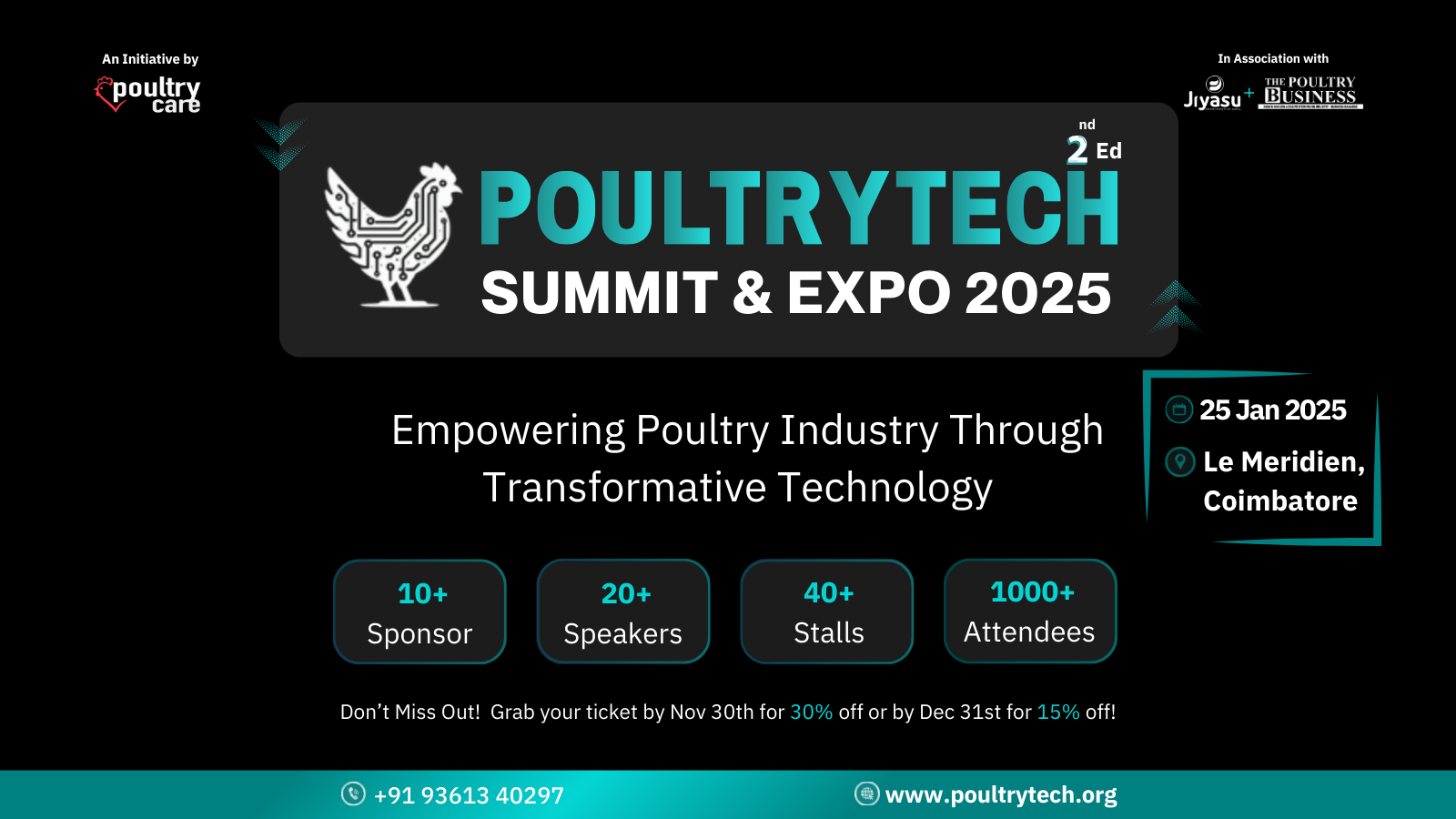In contract broiler farming, where large integrators manage flocks across multiple farms, consistent farm performance becomes a critical lever for profitability. It is not just about producing birds but doing so efficiently, predictably, and in alignment with every step of the production chain. From feed mill coordination to farm-level supervision, every activity plays a role in shaping flock outcomes. With experience working closely with farm owners and integrating digital technology into poultry operations, I have seen firsthand how small performance gaps can impact the entire supply chain. Focusing on farm-level execution is not only essential for bird health and growth but is the key to sustaining margins in a high-volume, low-margin business.
Understanding the Role of Farm Performance in Profitability
The difference between a profitable batch and a break-even one often lies in a few key indicators. Feed conversion rate, body weight at harvest, uniformity of birds, and mortality levels are the primary performance benchmarks that tell the story of how well a farm is operating. High feed consumption with low weight gain, erratic bird sizes, or preventable mortality usually points to process issues on the farm. These issues could stem from inconsistent supervision, improper brooding, or failure to act on early signs of disease or stress. When integrators understand these patterns and respond with precision, they are better positioned to ensure each farm contributes positively to the larger production plan.
Aligning Feed Mill Supply with Farm Growth Stages
Feed mill management is often treated as a separate function, but its alignment with farm needs is vital. Broilers grow fast, and their nutritional needs change rapidly. A mismatch between the feed phase and the bird’s development stage leads to inefficiency and poor performance. Feed that arrives late, or does not match the expected formula, puts pressure on bird health and delays growth. Integrators must ensure that feed production schedules are tightly linked with farm reporting and flock age. When this flow is synchronized, farms receive the right feed at the right time, reducing waste and enhancing daily weight gain.
Strengthening Field Supervision and On-Farm Practices
The presence of a knowledgeable field supervisor can often make the difference between a high-performing flock and an underperforming one. Farm owners look to supervisors not only for inspection but for practical advice. Timely checks, feedback on daily practices, and real-time decision support can prevent small issues from becoming costly problems. For large broiler integrators managing multiple farms, standardizing supervision protocols and equipping teams with checklists and flock data access can significantly raise the bar across farms. When supervisors can guide farmers with both empathy and insight, compliance improves and so does performance.
Monitoring Flock Progress and Responding Early
Every day in a broiler flock's life cycle matters. Integrators that invest in early detection systems, whether through regular manual updates or digital flock tracking, gain the advantage of early correction. A dip in water consumption, inconsistent weight records, or increased mortality should trigger action. Waiting for harvest time to analyze results is often too late. Real-time flock monitoring enables managers to intervene early, make informed adjustments, and recover performance before it's lost. This ongoing vigilance is especially important for large-scale operations where delays can scale into significant financial losses.
Encouraging Farmer Motivation and Ownership
Although the integration model gives clear guidelines and resources to the farmer, performance improves when farmers feel a sense of ownership. Recognition for good performance, transparent reporting, and periodic performance reviews help create this culture. When farmers understand how their care, cleanliness, and recordkeeping contribute to the final result, they become more invested. Involving them in small decisions and sharing flock data regularly improves cooperation and accountability. Over time, this leads to more consistent execution and fewer performance issues across farms.
Making Farm Performance a Central Strategy
For large broiler integrators, farm performance should not be treated as an outcome to observe at harvest, but as a dynamic process to manage every day. Building a culture of performance means equipping teams with tools, training, and systems that help them act on data, not just collect it. When feed mill managers, farm supervisors, and farmers work in alignment, it leads to healthier flocks, better feed efficiency, and more predictable profits. Performance is not about working harder, but working smarter, and ensuring that everyone in the chain understands how their role drives the final result.
Conclusion
Improving farm performance is not a one-time task but an ongoing priority for contract broiler farming operations. By aligning feed schedules, empowering field teams, tracking key indicators, and involving farmers in the process, large integrators can turn farm-level execution into a competitive advantage. The results are not just better flock performance, but stronger relationships with farmer partners and a more profitable, resilient production system.



